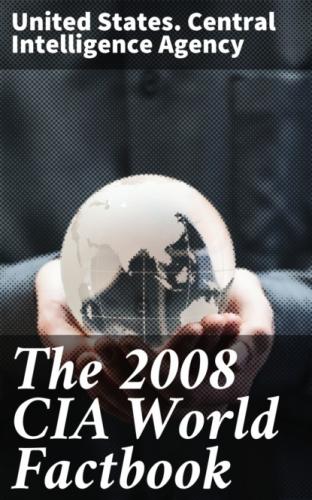Country name:
conventional long form: Republic of Albania conventional short form: Albania local long form: Republika e Shqiperise local short form: Shqiperia former: People's Socialist Republic of Albania
Government type:
emerging democracy
Capital:
name: Tirana (Tirane) geographic coordinates: 41 19 N, 19 49 E time difference: UTC+1 (6 hours ahead of Washington, DC during Standard Time) daylight saving time: +1hr, begins last Sunday in March; ends last Sunday in October
Administrative divisions:
12 counties (qarqe, singular - qark); Berat, Diber, Durres, Elbasan, Fier, Gjirokaster, Korce, Kukes, Lezhe, Shkoder, Tirane, Vlore
Independence:
28 November 1912 (from the Ottoman Empire)
National holiday:
Independence Day, 28 November (1912)
Constitution:
adopted by popular referendum on 22 November 1998; promulgated 28 November 1998
Legal system:
has a civil law system; has not accepted compulsory ICJ jurisdiction; has accepted jurisdiction of the International Criminal Court for its citizens
Suffrage:
18 years of age; universal
Executive branch:
chief of state: President of the Republic Bamir TOPI (since 24 July 2007) head of government: Prime Minister Sali BERISHA (since 10 September 2005) cabinet: Council of Ministers proposed by the prime minister, nominated by the president, and approved by parliament elections: president elected by the People's Assembly for a five-year term (eligible for a second term); four election rounds held between 8 and 20 July 2007 (next election to be held in 2012); prime minister appointed by the president election results: Bamir TOPI elected president; People's Assembly vote, fourth round (three-fifths majority (84 votes) required): Bamir TOPI 85 votes, Neritan CEKA 5 votes
Legislative branch:
unicameral Assembly or Kuvendi (140 seats; 100 members are elected by direct popular vote and 40 by proportional vote to serve four-year terms) elections: last held 3 July 2005 (next to be held in 2009) election results: percent of vote by party - NA; seats by party - PD 56, PS 42, PR 11, PSD 7, LSI 5, other 19
Judicial branch:
Constitutional Court, Supreme Court (chairman is elected by the People's Assembly for a four-year term), and multiple appeals and district courts
Political parties and leaders:
Agrarian Environmentalist Party or PAA [Lufter XHUVELI]; Christian
Democratic Party or PDK [Nard NDOKA]; Communist Party of Albania or
PKSH [Hysni MILLOSHI]; Democratic Alliance Party or AD [Neritan
CEKA]; Democratic Party or PD [Sali BERISHA]; Legality Movement
Party or PLL [Ekrem SPAHIA]; Liberal Union Party or BLD [Arjan
STAROVA]; Movement for National Development or LZhK [Dashamir
SHEHI]; National Front Party (Balli Kombetar) or PBK [Artur ROSHI];
New Democratic Party or PDR [Genc POLLO]; Party of National Unity or
PUK [Idajet BEQIRI]; Republican Party or PR [Fatmir MEDIU]; Social
Democracy Party of Albania or PDSSh [Paskal MILO]; Social Democratic
Party or PSD [Skender GJINUSHI]; Socialist Movement for Integration
or LSI [Ilir META]; Socialist Party or PS [Edi RAMA]; Union for
Human Rights Party or PBDNj [Vangjel DULE]
Political pressure groups and leaders:
Citizens Advocacy Office [Kreshnik SPAHIU]; Confederation of Trade
Unions of Albania or KSSH [Kastriot MUCO]; Front for Albanian
National Unification or FBKSH [Gafur ADILI]; Mjaft Movement; Omonia
[Jani JANI]; Union of Independent Trade Unions of Albania or BSPSH
[Gezim KALAJA]
International organization participation:
BSEC, CE, CEI, EAPC, EBRD, FAO, IAEA, IBRD, ICAO, ICCt, ICRM, IDA,
IDB, IFAD, IFC, IFRCS, ILO, IMF, IMO, Interpol, IOC, IOM, IPU, ISO
(correspondent), ITU, ITUC, MIGA, OIC, OIF, OPCW, OSCE, PFP, SECI,
UN, UNCTAD, UNESCO, UNIDO, UNOMIG, UNWTO, UPU, WCO, WFTU, WHO, WIPO,
WMO, WTO
Diplomatic representation in the US:
chief of mission: Ambassador Aleksander SALLABANDA chancery: 2100 S Street NW, Washington, DC 20008 telephone: [1] (202) 223–4942 FAX: [1] (202) 628–7342
Diplomatic representation from the US:
chief of mission: Ambassador Dr. John L. WITHERS, II embassy: Rruga e Elbasanit, Labinoti #103, Tirana mailing address: US Department of State, 9510 Tirana Place, Dulles, VA 20189–9510 telephone: [355] (4) 2247285 FAX: [355] (4) 2232222
Flag description:
red with a black two-headed eagle in the center
Economy
Albania
Economy - overview:
Lagging behind its Balkan neighbors, Albania is making the difficult transition to a more modern open-market economy. The government has taken measures to curb violent crime, and recently adopted a fiscal reform package aimed at reducing the large gray economy and attracting foreign investment. The economy is bolstered by annual remittances from abroad of $600-$800 million, mostly from Albanians residing in Greece and Italy; this helps offset the towering trade deficit. Agriculture, which accounts for more than one-fifth of GDP, is held back because of lack of modern equipment, unclear property rights, and the prevalence of small, inefficient plots of land. Energy shortages and antiquated and inadequate infrastructure contribute to Albania's poor business environment, which make it difficult to attract and sustain foreign investment. The completion of a new thermal power plant near Vlore and improved transmission line between Albania and Montenegro will help relieve the energy shortages. Also, the government is moving slowly to improve the poor national road and rail network, a long-standing barrier to sustained economic growth. On the positive side, macroeconomic growth was strong in 2003–07 and inflation is low and stable.
GDP (purchasing power parity):
$20.87 billion note: Albania has a large gray economy that may be as large as 50% of official GDP (2007 est.)
GDP (official exchange rate):
$10.62 billion (2007 est.)
GDP - real growth rate:
6% (2007 est.)
GDP - per capita (PPP):
$5,800 (2007 est.)
GDP - composition by sector:
agriculture: 21.2% industry: 20.5% services: 58.3% (2007 est.)
Labor force:
1.09 million (not including 352,000 emigrant workers) (September 2006 est.)
Labor force - by occupation:
agriculture: 58% industry: 15% services: 27% (September 2006 est.)
Unemployment rate:
13.2% official rate, but may exceed 30% due to preponderance of near-subsistence farming (2007 est.)
Population below poverty line:
